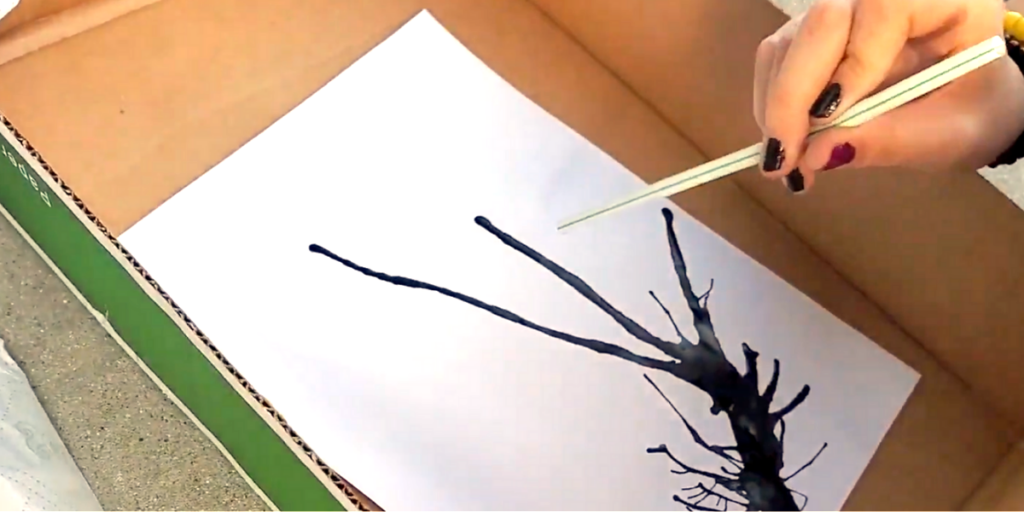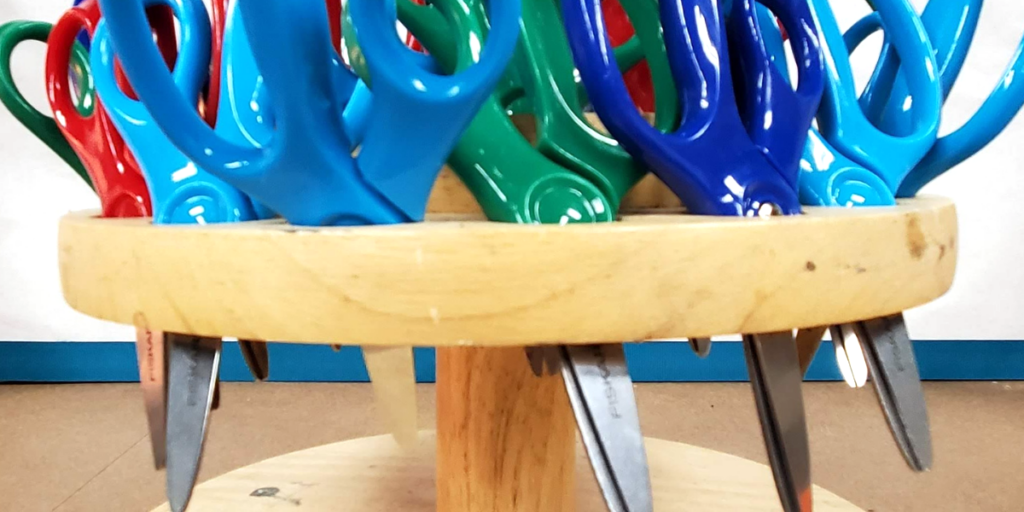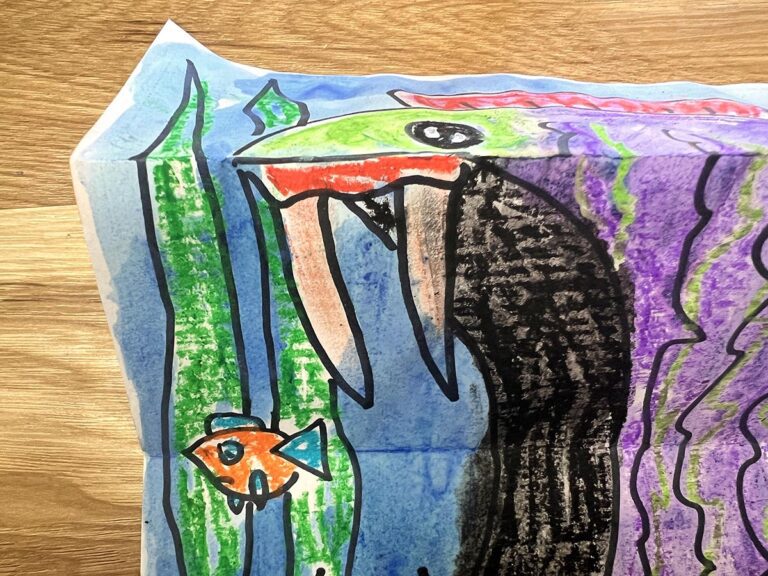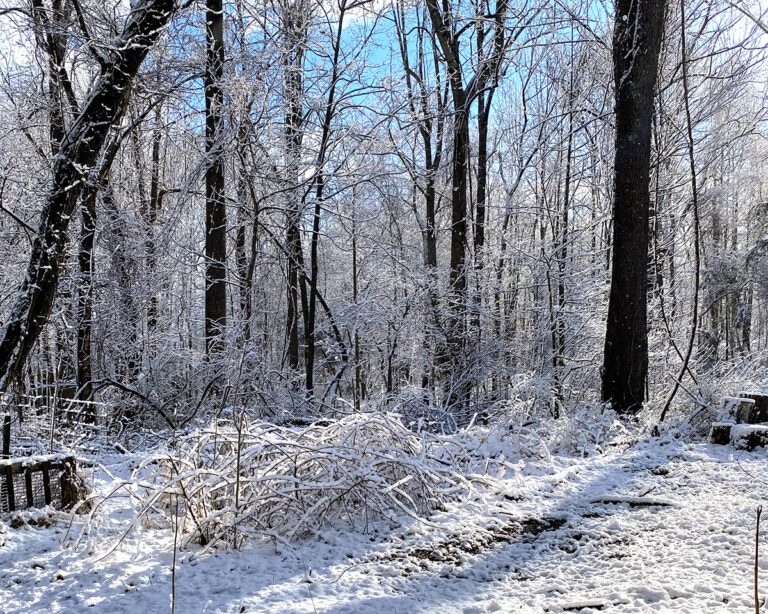Have you ever tried to encourage better craftsmanship only to have students tell you they like their work the way it is? While there is validity to developing one’s style, young learners also need to understand how to present their work well. In an opinion piece, writer Harvey Aughton considers the history of art, stating, “Every story, or painting, or symphony is built on a bedrock of crafted art handed down through the generations.” He calls the techniques formally learned the “raw material” an artist uses to create innovative work.
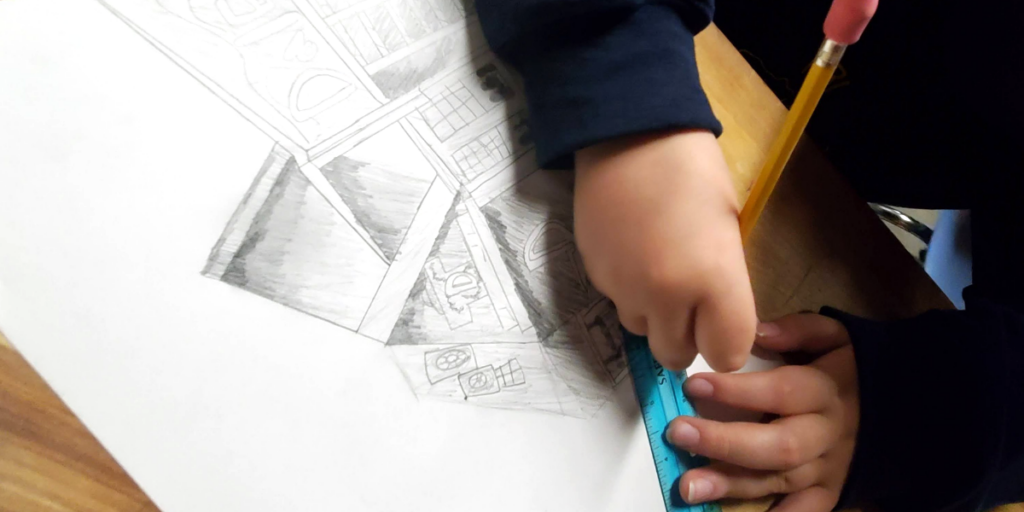
While students explore their artistic personalities, they must demonstrate growth in their craftsmanship. They do this by developing functional skills and monitoring their progress. In conjunction, we must also communicate clear goals and expectations.
For this article, we will define the term craftsmanship in alignment with Anchor Standard 2 of the National Core Art Standards. Craftsmanship refers to skill in the careful handling and use of tools, materials, and equipment, application of media, and presentation of the artwork.
Where has the craftsmanship gone, and why does it matter?
Since returning to in-person learning, teachers are noticing that fine motor skills and craftsmanship are in decline. This isn’t surprising, considering that remote learning took the place of hands-on work to reduce the risk of exposure to COVID. Students began spending more time on their computers, participating in school, joining social interactions, and keeping up with virtual doctor’s appointments. Researchers like Marcy Guddemi say that more screen time correlates to “decreased use of crayons, paints, pencils, scissors, clay, and other manipulatives in their daily lives.” Studies like this account for the decline of craftsmanship.
Craftsmanship matters because:
- The appearance of an artwork communicates the level of effort and intention to the viewer.
- Strong craftsmanship reflects the pride of the artist and their mastery of the materials.
- These skills are ancestral and often passed down or lost through generations.
- Well-crafted artwork stands the test of time, lasting for ages.
Luckily, the art room is an incredible place for teaching and learning these skills! We have the opportunity to expose students to a wide variety of media and techniques. Through our activities and lessons, fine motor skills and craftsmanship are part of our regular practice.
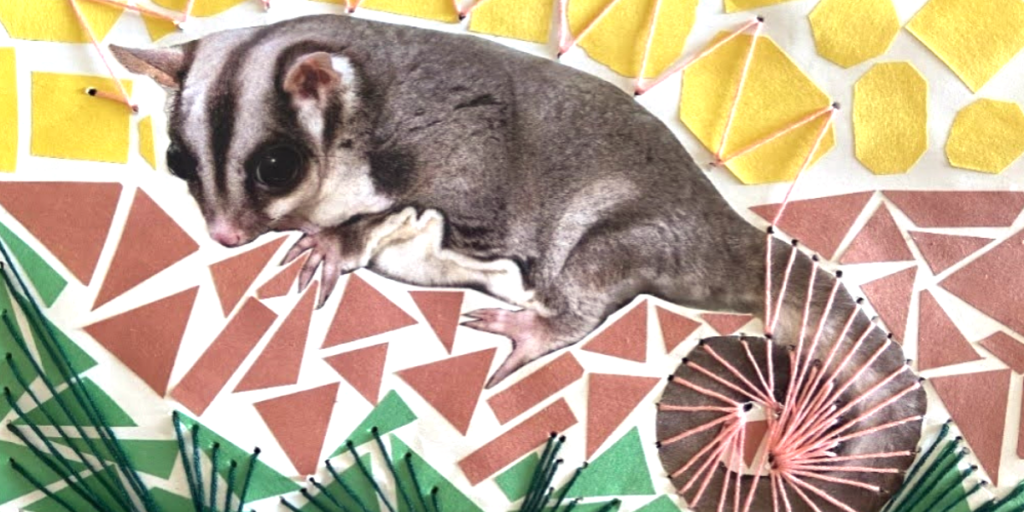
What is the relationship between fine motor skills and craftsmanship?
The development of fine motor skills is directly linked to quality craftsmanship. Dr. Robert Kneebone of Imperial College in London reflected on his surgical students’ lack of dexterity. He noted their fine motor skills “might once have been gained at school or at home, whether in cutting textiles, measuring ingredients, repairing something that’s broken, learning woodwork or holding an instrument.” But, in over a decade of observations, his students have become “less competent and less confident” in using their hands. The concern lies in that fine motor skills are essential for independence, self-care, and many jobs, like surgery.
It’s alarming to learn these skills are declining. Jobs ranging from automotive technicians and orthodontists to surgeons and tattoo artists rely on their fine motor ability. As customers and consumers, we rely on their fine motor ability for our safety. Developing fine motor skills is a lifelong investment that impacts your students’ immediate quality of life. The broader impact trickles down to the communities they serve once they join the workforce.
In the art room, fine motor skills also provide students with the ability and dexterity to work independently. Cutting on a line, picking up small objects, tearing paper, and holding a pencil are a few examples highlighting their importance. When a student has solid fine motor skills, it’s easier for them to achieve high levels of craftsmanship and thereby stronger, more professional-looking artworks.
What are some fine motor ideas that support the development of craftsmanship?
Craftsmanship skills emerge over time in school. Practice, repetition, and frequent in-person feedback from teachers are important factors. There’s not a one-size-fits-all approach to fine motor skill or craftsmanship development. Read on for four overarching areas that are further broken down into eighteen fine motor activities that support the development of quality craftsmanship.
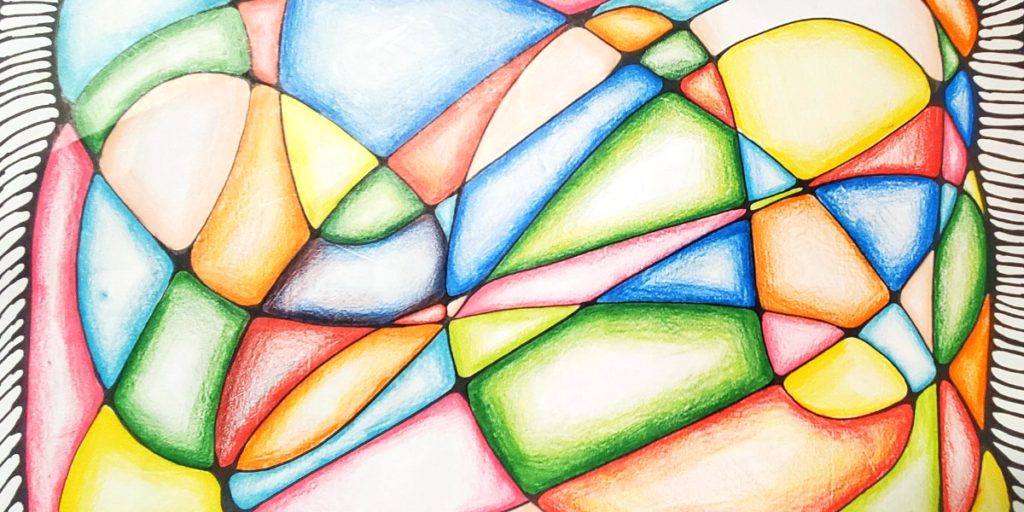
Increase endurance for hands-on work.
Students need stamina when creating art. From careful coloring to creating masterpieces in clay, exercising growing muscles is key.
1. Work with playdough and clay to exercise the muscles in the hands, wrists, and arms. Squishing, wedging, rolling, and coiling train muscles for other activities like coloring and writing.
2. Build with plastic building bricks to support hand-eye coordination, grasp development, and hand strength. Have students build and then ask them to draw their construction!
3. Employ an easel or vertical painting to build the upper body strength needed to stabilize the body against gravity. Tape paper to vertical surfaces like walls and doors, or let your students paint your classroom windows with tempera paint.

Practice finger isolation.
Using one finger to perform a task is called “finger isolation.” This skill is used in activities like typing or turning pages in a book.
4. Finger paint for a nostalgic and fun activity for all ages. When limited to a small surface, fingerpainting supports hand-eye coordination and spatial awareness.
5. Fingerprint pointillism (pictured above) is a creative way to practice finger isolation and teach this historical style.
6. Play with finger puppets to make learning engaging and accessible. Learn more about using them in the classroom here.
7. Apply glitter or sequins with a dampened finger to add details to projects.
8. Teach students to use American Sign Language cues for classroom requests.
Use open thumb web space exercises.
Try this! Connect the tip of your ring finger to the tip of your thumb, like when creating the “O” in the “OK” hand gesture. The circle that forms is your open thumb’s web space. We use this fine motor skill to grasp and maintain control over a pencil or pinch something.
9. Create eyedropper ink paintings (pictured above) by squeezing India ink onto smooth paper. Blow the ink across the surface using a straw for an interesting way to incorporate the open thumb’s web space. Apply watercolor paint to bring these exciting creations to life.
10. Bead and make jewelry with polymer clay in the Polymer Set Lesson in FLEX Curriculum. Stringing beads is also an excellent way to practice bilateral coordination.
11. Thread a needle for sewing, embroidery, and other fiber arts. Holding a needle is a fantastic way to practice an open thumb’s web space. Check out 33 Fiber Arts Ideas for Your Classroom for inspiration.
12. Stitch or lace a stuffed object or animal using paper or cloth. Hole punch around the perimeter, then stitch with yarn using an embroidery needle. These are wonderful mindfulness activities on their own. A bonus is that they connect with open thumb web space practice and visual-motor integration.
13. Tie macramé knots. Capitalize on this trend while practicing fine motor skills.
14. Arrange intricate patterns with plastic fusion beads. Integrate STEAM with the Perler Bead Code Lesson in FLEX Curriculum, or make some jewelry with this tutorial.
15. Weave with paper, ribbon, yarn, or scrap fabric. The Basic Weaving Techniques Pack in PRO Learning has excellent ideas on how to introduce weaving.
Flex those scissor skills.
Scissors deserve a category of their own due to the number of skills developed when learning to use them. From perfecting their grasp to holding them with correct body posture, scissor use supports bilateral coordination and visual motor integration.
16. Roll and cut thin coils of playdough or clay instead of paper. Students practice pinching off chunks of clay and then rolling them into long, thin coils. Cut the coils with scissors and roll each piece into small spheres to make beads or marbles.
17. Create paper fringe to practice “little snips.” This quick and easy project helps beginners become more confident with scissors.
18. Cut angles, curves, and shapes through two layers of paper for a more advanced scissor skill. Students grasp the paper with one hand (the “helper” hand) and turn it while cutting with the opposite hand (the “dominant” hand). This activates both bilateral coordination and visual motor integration. A great trick to support this skill is to draw the lines or shapes onto a piece of paper with a bold marker. Then, overlay wax paper. Students pinch both papers together to complete cutting, moving their helper hand along the lines. Turn these paper cutouts into collages following this inspiration.
What are five ways to reinforce craftsmanship expectations?
Now that you have a trove of ideas for developing fine motor skills, let’s think about how we pair them with communication. To help students track their progress and determine areas of growth, we must discuss expectations.
- Conduct a rubric review.
Set craftsmanship expectations using rubrics. This support guides the degree of “finished” work students turn in. - Create a visual chart.
Include exemplars or images of each rubric score for each material and technique. - Plan informal peer-to-peer craftsmanship checks.
Base the checks on the criteria discussed in the rubrics. By analyzing other students’ work, their peers will also think critically about their work. Ask students to offer their peers two celebrations and one area of growth about their project. Set the focus on the celebrations to make for a positive feedback experience. - Carve out time for a gallery walk around the classroom.
Students love to see how their classmates are progressing. It may be the motivation some students need to take their work to the next level. - Give students brain breaks when they have reached their saturation point.
They can come back to their project once they have stepped away and can view their work with fresh eyes.
The good news is it’s never too late to practice and hone one’s craftsmanship abilities by developing fine motor skills. With more swiping on touch screens and less hands-on work with manipulatives, we must provide students with as many fine motor opportunities as possible. As students rise to the challenge of learning these functional skills, their ability to present well-crafted work will grow.
Portions of this work are based on the National Core Arts Standards. Used with permission. National Coalition for Core Arts Standards (2015) National Core Arts Standards. Rights Administered by the State Education Agency Directors of Arts Education. Dover, DE, www.nationalartsstandards.org all rights reserved.
NCAS does not endorse or promote any goods or services offered by the Art of Education University.
What are your most successful ways to teach craftsmanship?
Which are your favorite activities to support students’ fine motor development?
Magazine articles and podcasts are opinions of professional education contributors and do not necessarily represent the position of the Art of Education University (AOEU) or its academic offerings. Contributors use terms in the way they are most often talked about in the scope of their educational experiences.

